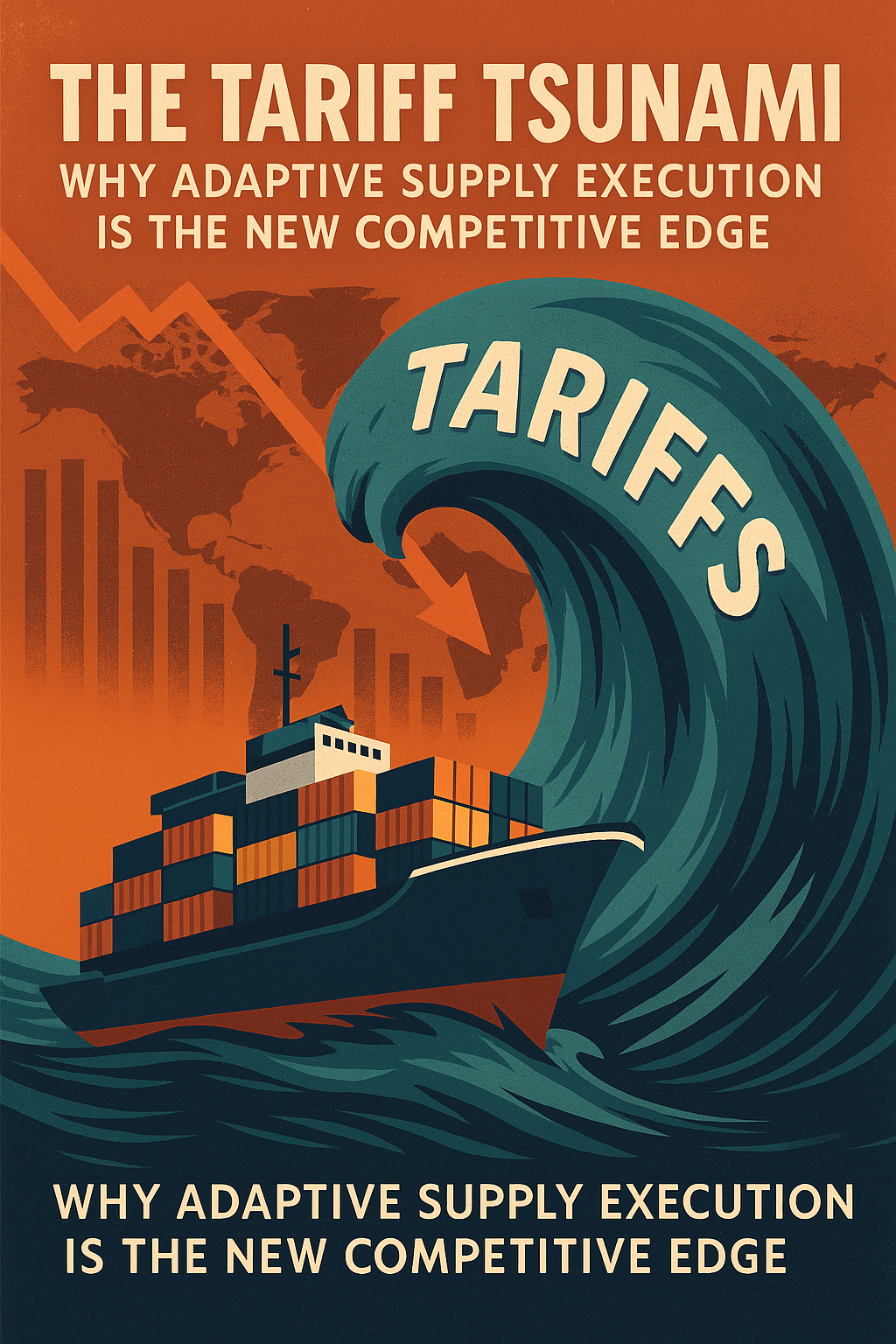The Tariff Tsunami: Why Adaptive Supply Execution Is the New Competitive Edge

Global trade is undergoing its most dramatic reset in over half a century.
With sweeping tariffs now impacting over 60 countries—including a universal 10% baseline and reciprocal tariffs reaching 50% or more—the world is no longer governed by predictable trade norms. The “most favored nation” principle is fading. In its place, a world of fragmented, bilateral, interest-based trade deals is emerging—often shaped as much by diplomacy as by economics.
For enterprises, this means a tectonic shift: the assumptions baked into global supply chain strategies over the last 20 years are no longer valid.
The new normal is uncertainty—and velocity.
Most traditional supply chain strategies were designed for cost optimization and stability, not volatility. They assumed:
Predictable tariff regimes
Long-term low-cost labor arbitrage
Stable geopolitical alliances
Regional production specialization
That model is collapsing under the weight of compounding tariffs, retaliatory levies, strategic resource restrictions, and rising geopolitical friction.
The result? Supply networks are out of sync with reality. The cost advantage of offshoring is eroding. Location-based tax, tariff, and input cost dynamics now shift monthly, sometimes weekly. Static supply structures can no longer guarantee efficiency or resilience.
Enterprises must shift from rigid orchestration to adaptive execution.
What does that mean?
Rethink supply chain design as a fluid network, not a linear pipeline
Build optionality: multiple suppliers, nearshoring, multisourcing
Activate just-in-time teams and expertise through platforms—not just fixed roles
Use AI to simulate and forecast trade impact scenarios
Move from fixed planning to real-time responsiveness
This kind of execution agility can’t be powered by legacy systems or annual planning cycles. It demands modular execution capacity—one that moves with policy, pricing, and production shifts.
This is where the Virtual Delivery Center (VDC) model from AiDOOS shines.
Rather than building everything in-house—or depending solely on a small set of suppliers—enterprises can use VDCs to dynamically plug in the right capabilities, geographies, and suppliers, on demand.
Need to redesign your supplier contract system to incorporate multi-scenario tariff impacts?
Need to launch an AI model that calculates optimal landed costs across three regions?
Need to set up digital twin simulations of plant movement from China to Vietnam?
A VDC can spin up a specialized team in hours.
It’s like having a borderless execution layer—one that allows you to adapt faster than the policy environment can change.
Tariffs may be the shock, but intelligence is the counterbalance.
Forward-thinking enterprises are investing in:
AI-driven sourcing platforms to calculate real-time total landed cost
Digital twin models to simulate relocation or reshoring outcomes
Predictive contract management to assess impact across deal types
Geopolitical dashboards to interpret trade signals
But tools alone don’t create impact. They need to be activated by the right skills—data scientists, trade experts, automation engineers. Here again, VDCs play a crucial role, acting as activation hubs for specialized capabilities.
If you’re leading an enterprise, ask yourself:
Do we have live visibility into tariff exposure across our value chain?
Can we reroute sourcing or execution within weeks—not quarters?
Is our operating model designed for agility at the edge, not just control at the core?
Are we still treating supply chain as logistics—or as strategic advantage?
In the new world, resilience is no longer a hedge—it’s the winning strategy.
Traditional offshoring was about low cost, long lead time, and static resources.
VDCs are about right cost, real-time delivery, and dynamic teams.
While offshoring locks you into long-term commitments in specific countries (now potentially penalized), VDCs let you shift execution seamlessly across borders, cloud teams, and domains.
You don’t relocate your entire base—you reconfigure your execution mesh.
This is the only viable response to a fragmented trade environment.
The tariff tsunami won’t subside soon. It signals a broader shift toward localized, politicized, and volatile trade environments.
Enterprises that cling to the old model will find themselves paying not just higher tariffs, but higher strategic costs—loss of agility, innovation, and market share.
But those that embrace the Virtual Delivery Center model, infuse execution with AI and intelligence, and redesign for adaptive supply will not just survive—they’ll shape the next era of global trade.
This is the decade to become unshakeably agile.
To turn policy shocks into execution advantages.
To build—not at the speed of trade—but at the speed of intelligent delivery.